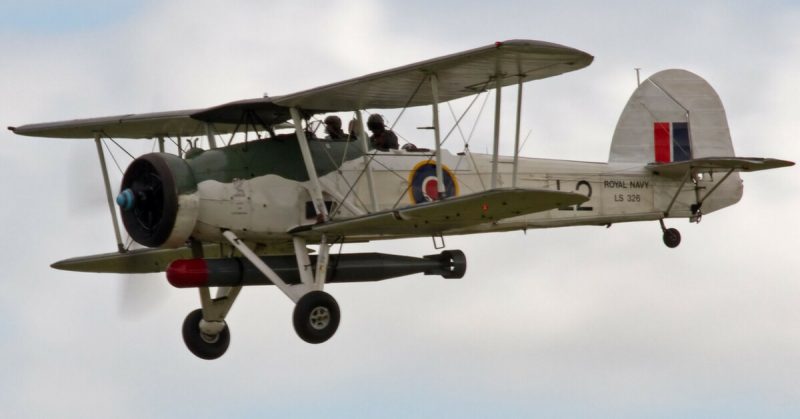Surprise attacks and ambushes can turn the tide of war. More often than not, the side that has the larger base of industry or manpower wins in the end, but occasionally a well-timed and placed surprise can turn the tables, quicken what would be an overly long war, or give the smaller side a fighting chance. Here are a few of the best-executed surprises throughout history.
1. The WW2 night-raid on Taranto Harbour
You would be hard pressed to find someone who hasn’t heard of the attack on Pearl Harbor, but few remember the much smaller ariel attack on the Italian harbor of Taranto. This took place at the start of November 1940, and it changed the balance of power in the Mediterranean at the time. Aerial attacks on naval targets were not unknown, but their effectiveness varied, often depending on the number of anti-aircraft defenses in place both on ships and around harbors, from guns to balloons or even torpedo-catching nets.
Early in the war, the British faced a potentially powerful Italian navy largely stationed in Taranto. The Italians employed a strategy of defending the surrounding region by sitting tight in port with a strong amount of firepower, in this case, six battleships, 16 heavy and light cruisers, and 13 destroyers.
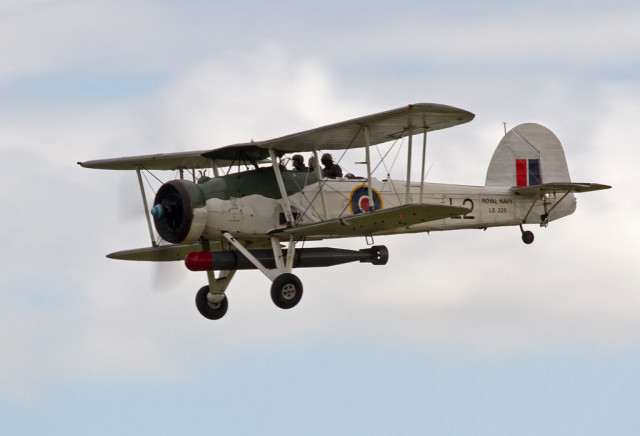
It was decided that a nighttime aerial attack might do enough damage to turn the tide and 21 soon to be obsolete, but still functional, biplane bombers gathered on the freshly constructed carrier HMS Illustrious. The Italian Fleet at Taranto was well-guarded by anti-aircraft guns and a shallow harbor with some anti-torpedo netting, but they weren’t expecting such a daring nighttime raid.
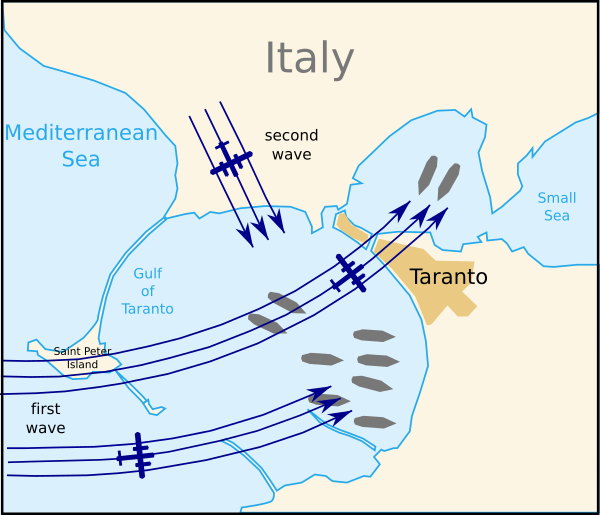
The first wave of bombers went in at about 11 PM, their way lit by a flare. A dive bombing run on some oil tanks further illuminated the harbor. The harbor had a lot of barrage balloons, but many had been blown away recently, leaving the bombers able to dodge the remaining ones.
The attack came in two waves, bringing down one battleship and crippling multiple other battleships and cruisers, in addition to damaging the harbor and inflicting many casualties. The targets were difficult to identify, and the bombers described the run as hellish, one responding to a request for another run by saying “they only asked the Light Brigade to do it once.”
Despite the anti-aircraft fire, only two planes were brought down. One of the two-man flight crews was captured. The other was killed. Comparing damages especially given the small scale of the engagement, the attack on Taranto was an astounding success. The tide had certainly been turned in the Mediterranean as the British navy was able to exert much more influence, though the balance of power did shift again as the war progressed.
2. No Way Out – Hannibal destroys a Roman Army
When Hannibal invaded Italy in 218 BCE, he was taking on a Roman powerhouse that had a huge potential pool of well-trained soldiers. Hannibal would have to win decisive victories to show his seriousness and the inability of the Roman army to stop him.
His first major battle in Italy at Trebia was an incomplete success as the Roman center broke free and escaped. Deeper in the forested hills of Italy, Hannibal attempted to trap an entire Roman army. Taking advantage of the overly aggressive pursuit of the Roman general Flaminius, Hannibal led the Romans onto a narrow path between Lake Trasimene and the rolling hills.
Hannibal had set a small force at the far side of the lake with large amounts of baggage, fire and plenty of smoke to imply that they were the rearguard of his army marching or preparing to march just over the next hill. Flaminius took the bait and sent his men in a pursuit column to quickly march along the narrow road between the hills and the coast.
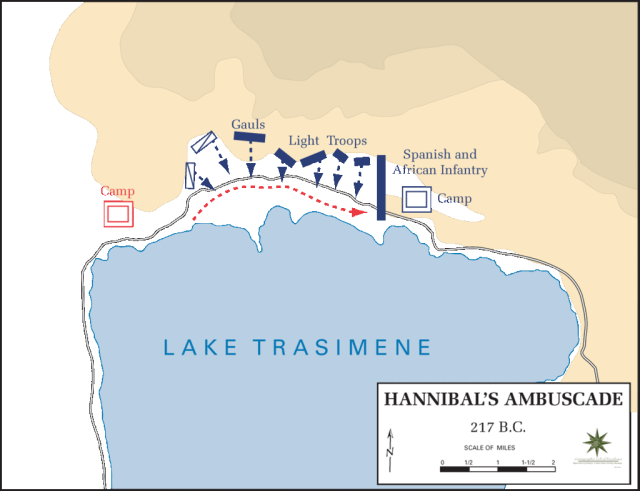
Little did Flaminius know that the hills he was squeezing past contained the vast majority of Hannibal’s hidden army. Once Flaminius’ force had all been funneled into the gap, the Carthaginians charged down the hills, smashing into the disorganized Roman marching column. Nearly the entire 30,000 man force was killed or captured. Many men drowned in the lake, cut off from any chance of retreat.
Hiding an entire army and coordinating a simultaneous attack was incredibly difficult in the ancient world, the battle of Lake Trasimene goes down in history as a testament to Hannibal’s amazing generalship. In terms of manpower, it remains the biggest successful ambush in history. Just a year later he would spring another successful trap in the open field against a much larger force at the Battle of Cannae.
3. Stonewall Jackson’s flanking attack at Chancellorsville
Deep into the American Civil War, Confederate General Robert E. Lee’s army was in danger of being trapped by a vastly larger force. Union Generals John Sedgwick and Joseph Hooker were in command of the attack. Sedgwick held the eastern flank while General Hooker attacked from the northwest with an army almost twice the size of Lee’s.
Lee boldly divided his army into three and sent General Thomas “Stonewall” Jackson with a huge chunk of his force to flank the attackers.
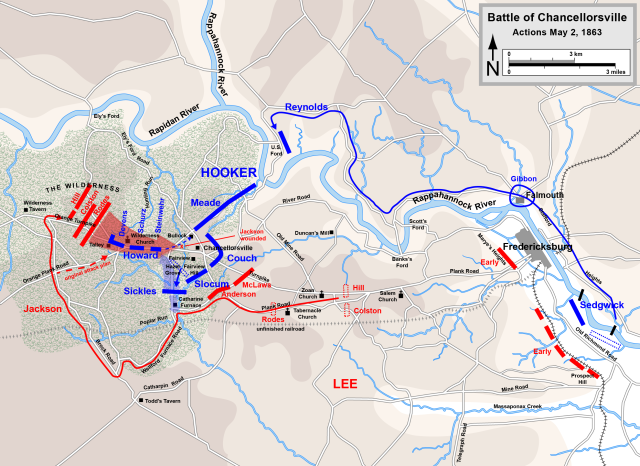
This flanking attack was no small diversionary force – Jackson took about 2/3rds of the western force out in the attack, leaving only a small defensive force under Lee. The size of the force meant that Jackson had to take his men south, then west and finally north and east to keep hidden. The long march paid off, and Jackson’s attack took the Union troops by complete surprise. The attack was successful and only stopped by nightfall, which unfortunately led to the friendly fire death of Stonewall Jackson himself.
The next day, however, Lee and the flanking force were able to rout the numerically superior force under Hooker before heading eastward to take out Sedgwick. In one of Lee’s most impressive battles, he was able to take over half of his force and successfully flank a far larger army, all while facing a separate army on his flank, and succeeded in defeating both with extraordinary efficiency.
4. Operation Focus: The Sinai Air Strike
Israel is no stranger to being surrounded by hostile nations and people, they live with it every day and have for generations. In 1967, Israel faced an impending war with the surrounding nations of Egypt, Syria, and Jordan, with many other nations supporting those three. The limited territory of Israel made easy targets for enemy fighters and bombers. This, combined with the prospect of facing enemies with combined troop and tank numbers many times what Israel could field, led to the idea of a preemptive air strike.
Egypt had the most modern air force of Israel’s enemies and became a major target for the planned strike. Israeli jets flew low out over the Mediterranean before turning south towards Egypt. They flew under radar range and below the effective altitude of Egypt’s surface-to-air missiles. Fighters strafed Egyptian aircraft easily as many were not under hardened hangars. Special bombs were dropped on the airfields -they were built specifically to cause heavy damage to the runways.
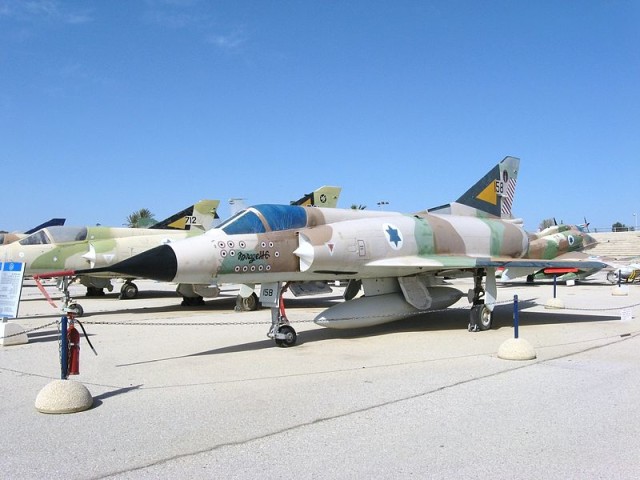
The first wave of a little less than 200 IAF planes caused substantial damage before returning to their bases to refuel and rearm. The few Egyptian planes that were able to take off were quickly outnumbered and shot down, and the IAF further damaged airfields and other strategic locations.
A third wave on the first day was diverted towards Syria and Jordan when those countries sent retaliatory bombers to Israel. This wave caused catastrophic damage and crippled the air power of all nations fighting against Israel. In the ensuing ground war, Israel’s air force continued to strike airfields and radar with great success. IAF assistance in ground engagements greatly altered the power balance of the war.
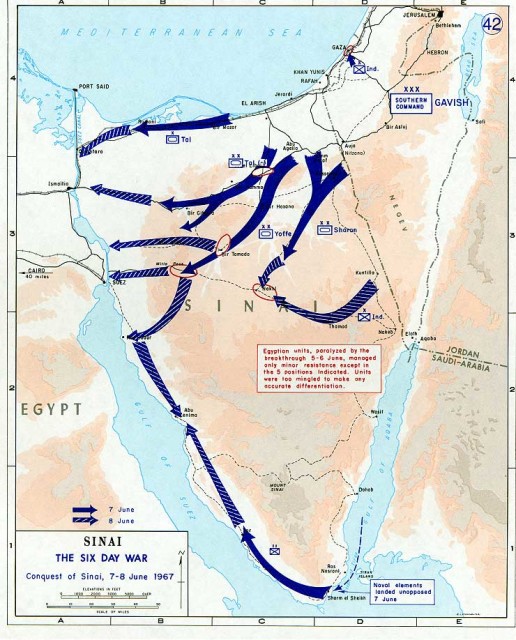
The air strike which heralded the beginning of the Six-Day War was a powerful example of the importance of air superiority and the effectiveness of quick strikes in modern warfare. Though the preemptive air strike has been controversial, it certainly achieved its aims.
By William McLaughlin for War History Online
